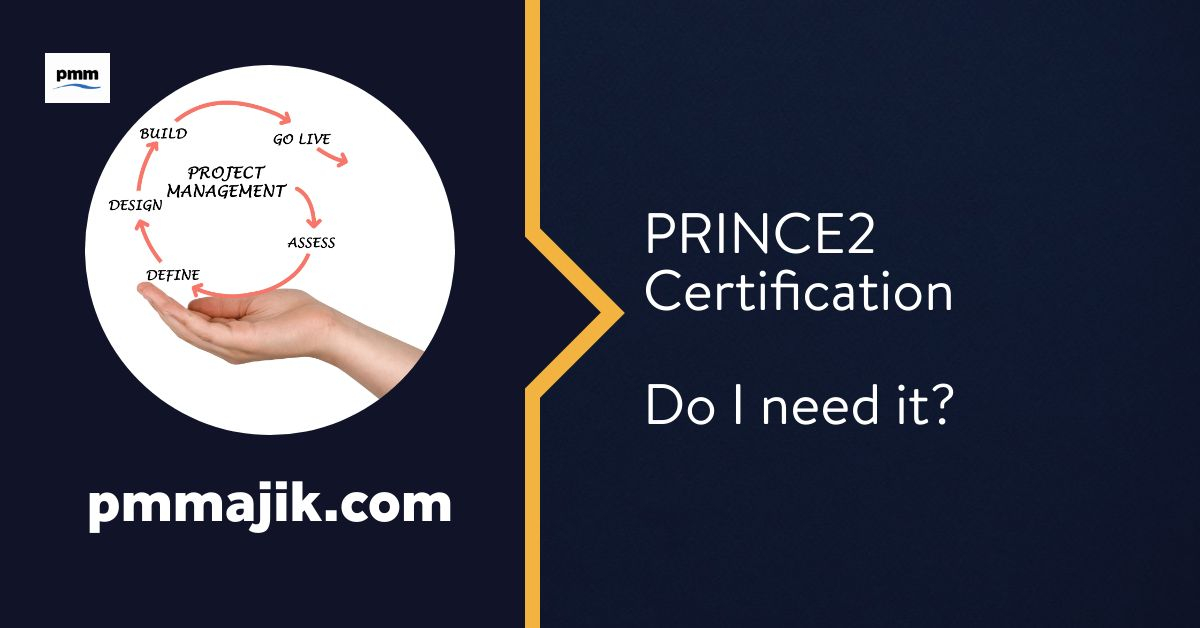Certifications can be the key to getting a better project management office (PMO) role or increasing your salary. Looking at whether you need the PRINCE2 certification is a smart move, and it’s what we’re looking at here.
There are lots of project management certifications available and none of them are cheap, so it’s important that you know what you get for your time and money. To that end, we’re going to look at:
- Who runs and certifies the PRINCE2 program
- What you need in terms of qualifications and cash before you start
- The skills and knowledge you should learn during PRINCE2
- Pros and cons of taking PRINCE2
Helping you to make an informed decision.
What is PRINCE2 and who certifies it?
PRINCE2 in an acronym for Projects in a Controlled Environment 2, and is a project management certification offered by AXELOS. AXELOS is jointly owned by the UK government and the private company Capita, with the mission to create best practices in project management.
Whilst you do your exam and get your PRINCE2 certificate from AXELOS, you will undertake your training with an approved training organisation (ATO) and sit your exam with AXELOS.
In the UK, there are four training centres where you can sit the exam, in
- London
- Milton Keynes
- Chester
- York
If you’re overseas, you may be able to take the exam in your local British Council and there is also an online exam that you can take.
What do I need before I can take the PRINCE2 certification?
There are two levels of PRINCE2, the Foundation and Practitioner levels. To take the Foundation level, you don’t need to have any specific qualifications but having project management or PMO experience will be a big help.
For the Practitioner level, you will need to have completed the PRINCE2 Foundation, PMI’s Project Management Professional certification, or other certifications on a prescribed list.
How much does PRINCE2 cost?
The cost of PRINCE2 can vary depending on a range of factors. Whether you choose to do your training online or in-person will be a big differentiator.
You can choose to only study independently for the certification using the PRINCE2 manual alone to cut down on costs. This may be counterproductive since how you interpret the information may be different to how to framework expects.
Expect to pay anywhere between £350 – £1,000 for the Foundation course and the same again for the Practitioner course. It is possible to combine the two with some providers, and you can expect to pay around £750 – £1,600.
Exam fees can be around £200 and may or may not be included in your fees; be sure to check.
What will I learn with the PRINCE2 certification?
PRINCE2 is a complete framework that your employer will use to run projects, particularly in the UK. This way of running projects is very common in the UK and is becoming more popular across the world.
It’s a process-based method to run projects that covers the fundamentals of how they work. At the Foundation level or PRINCE2, you learn about how to bring in a project on time and on budget whilst as a Practitioner, you’ll learn how to adapt and tailor the methods to projects of different sizes.
Once you’ve completed your training and exam, you’ll be competent in controlling projects and regularly reviewing them. Although in a PMO you don’t directly manage a project, knowing the same information as your project managers is highly valuable.
There is a lot of documentation that comes with running a project with PRINCE2, so as a PMO leader you need to know how to use the data that’s produced.
PRINCE2 covers the governance of projects rather than the how of delivery. This also makes it very useful when you work in a PMO.
What are the advantages and disadvantages of the PRINCE2 certification?
Pros of the PRINCE2 certification
- You can choose to take your training online or in-person, depending on budget and location
- The certification is globally recognised, with more than 1 million holders
- 88% of people who took the PRINCE2 say it helped them find a job and it’s commonly listed as an employment requirement
- It focusses on the outputs and results of projects so is flexible
Cons of the PRINCE2 certification
- The exam is only available in English and the languages planned for expansion are all European
- There is a lot of documentation involved in the process which may not suit your style
The take-home
Whether you should do the PRINCE2 certification will depend on the type of businesses you will work in and the style of PMO you run. It is widely recognised and offers a deep understanding of projects that can help you with project governance, if you’re able to afford the costs.






